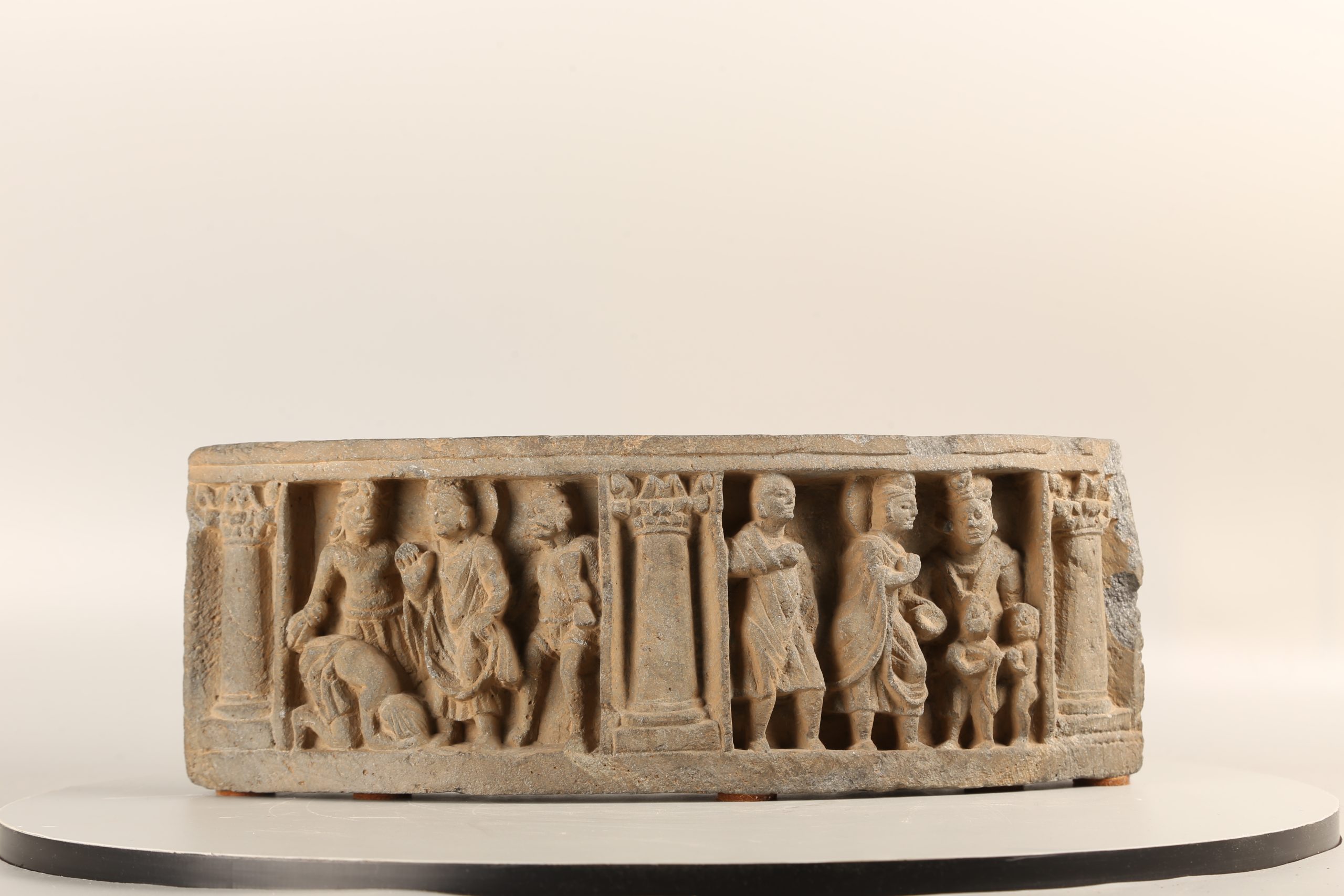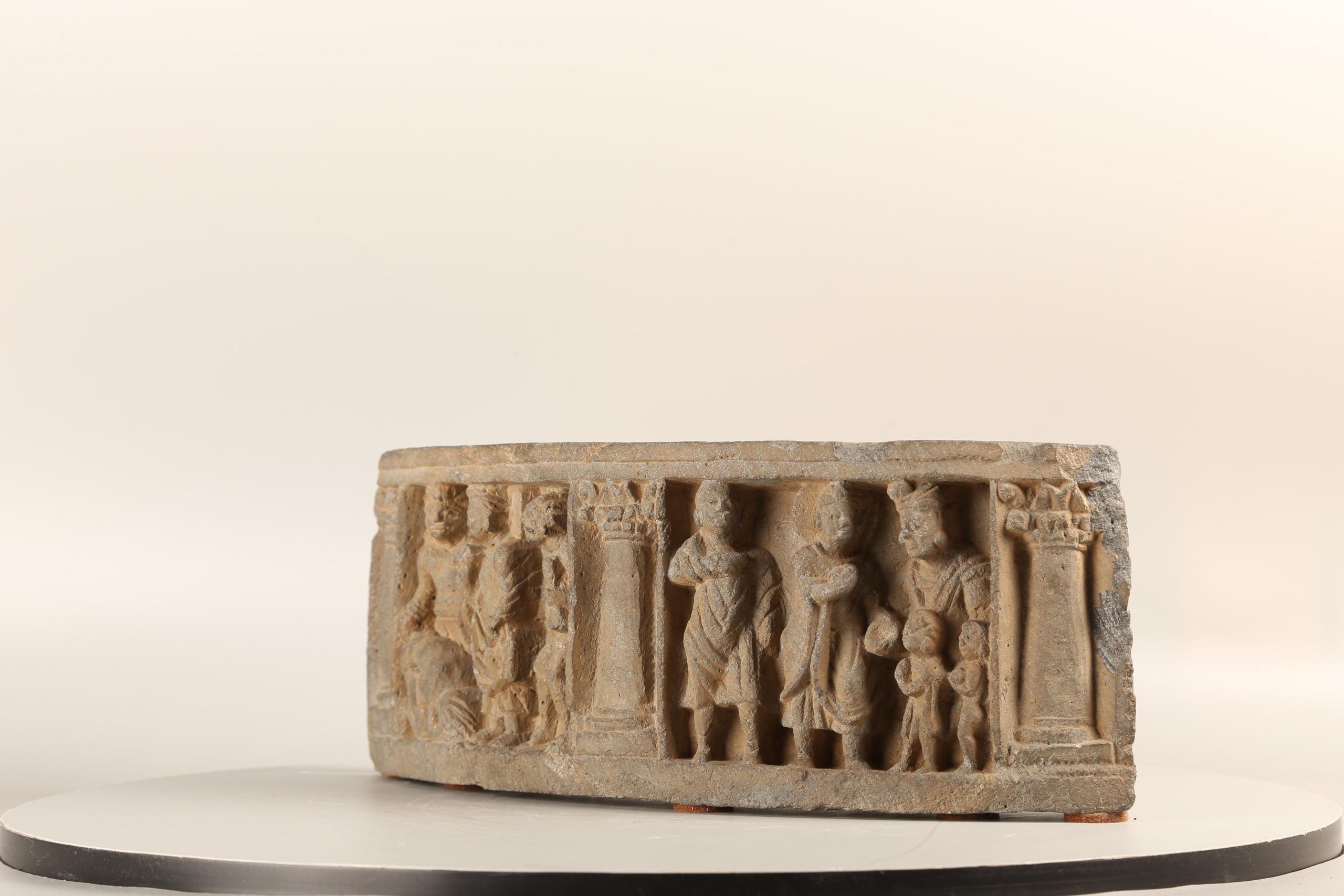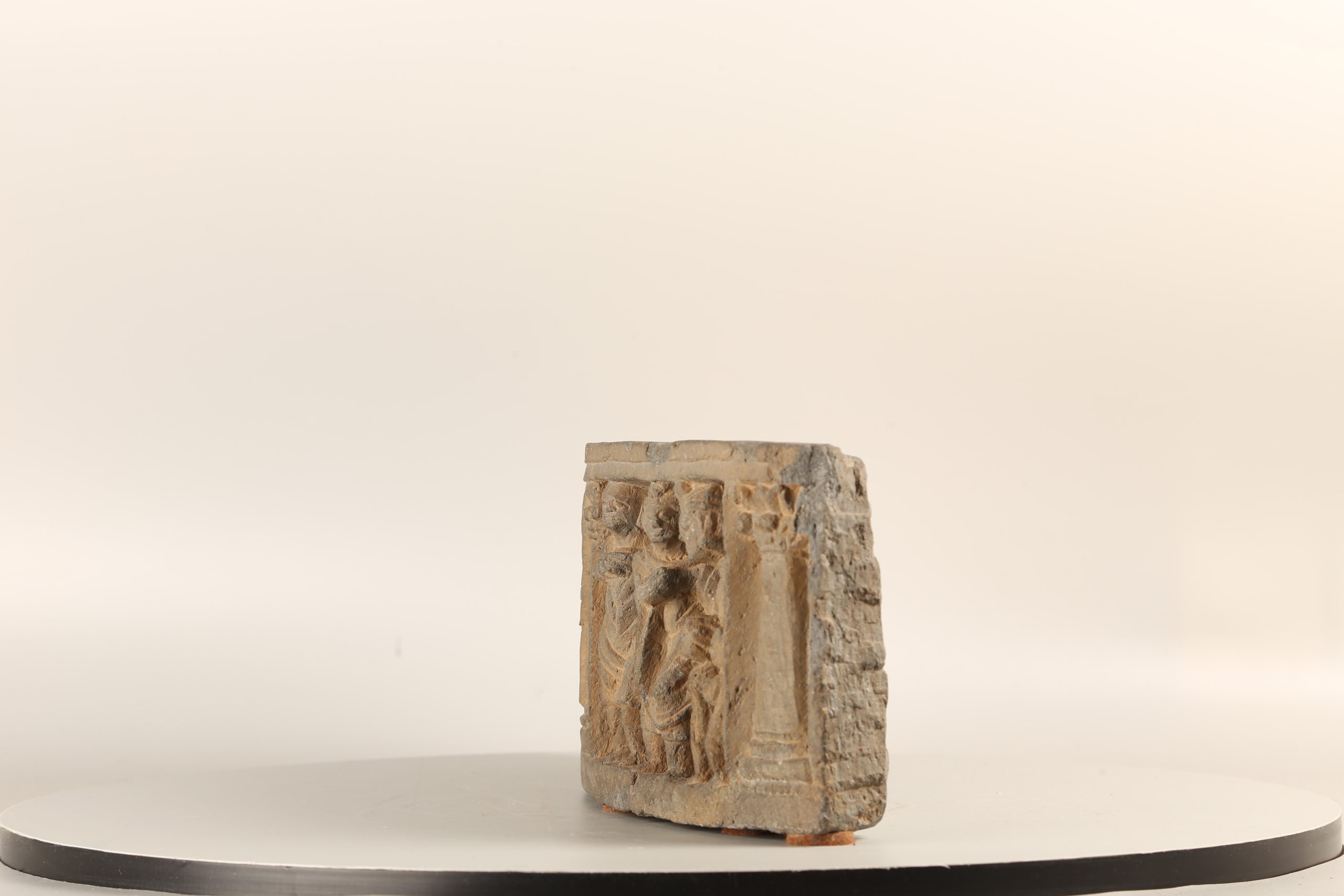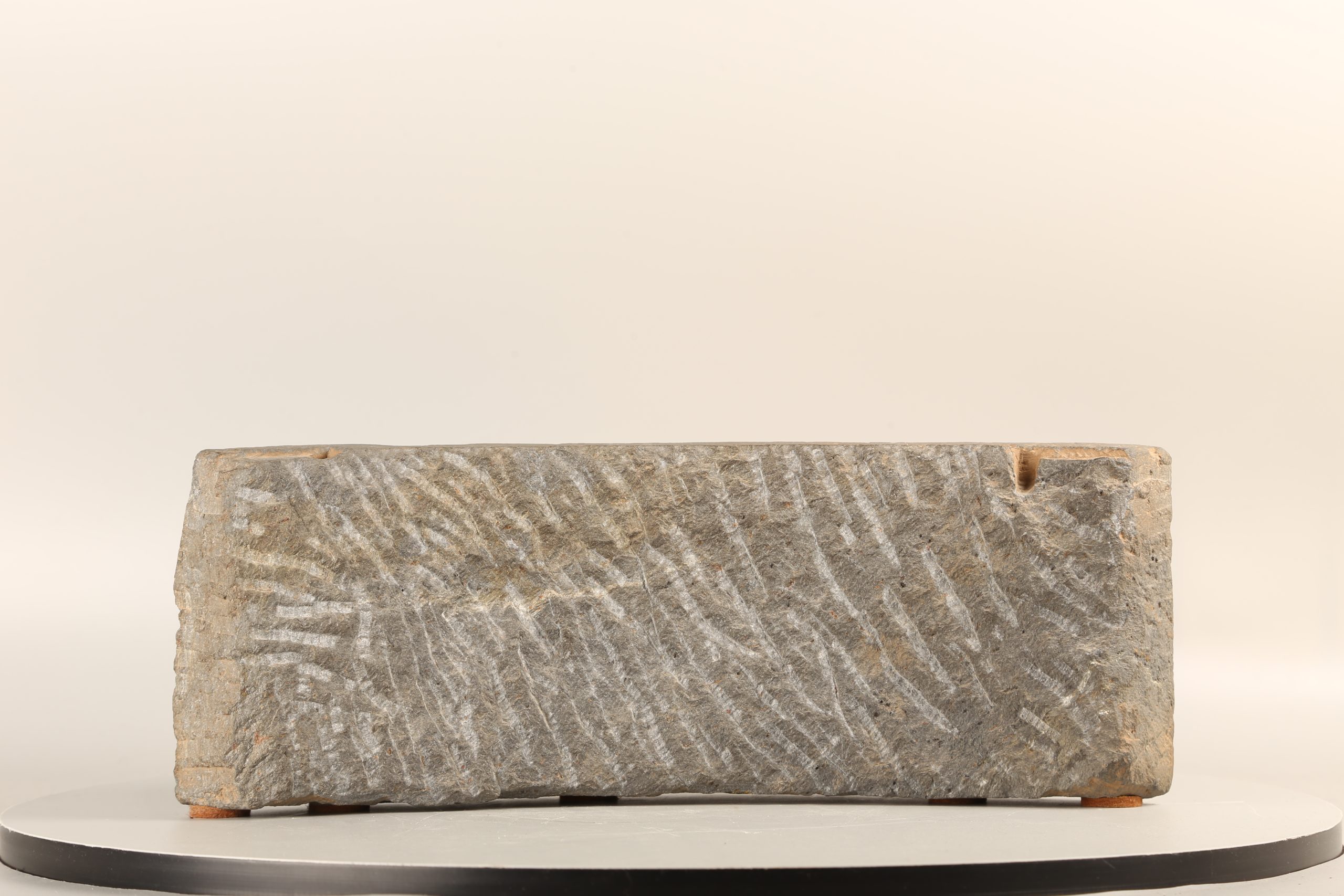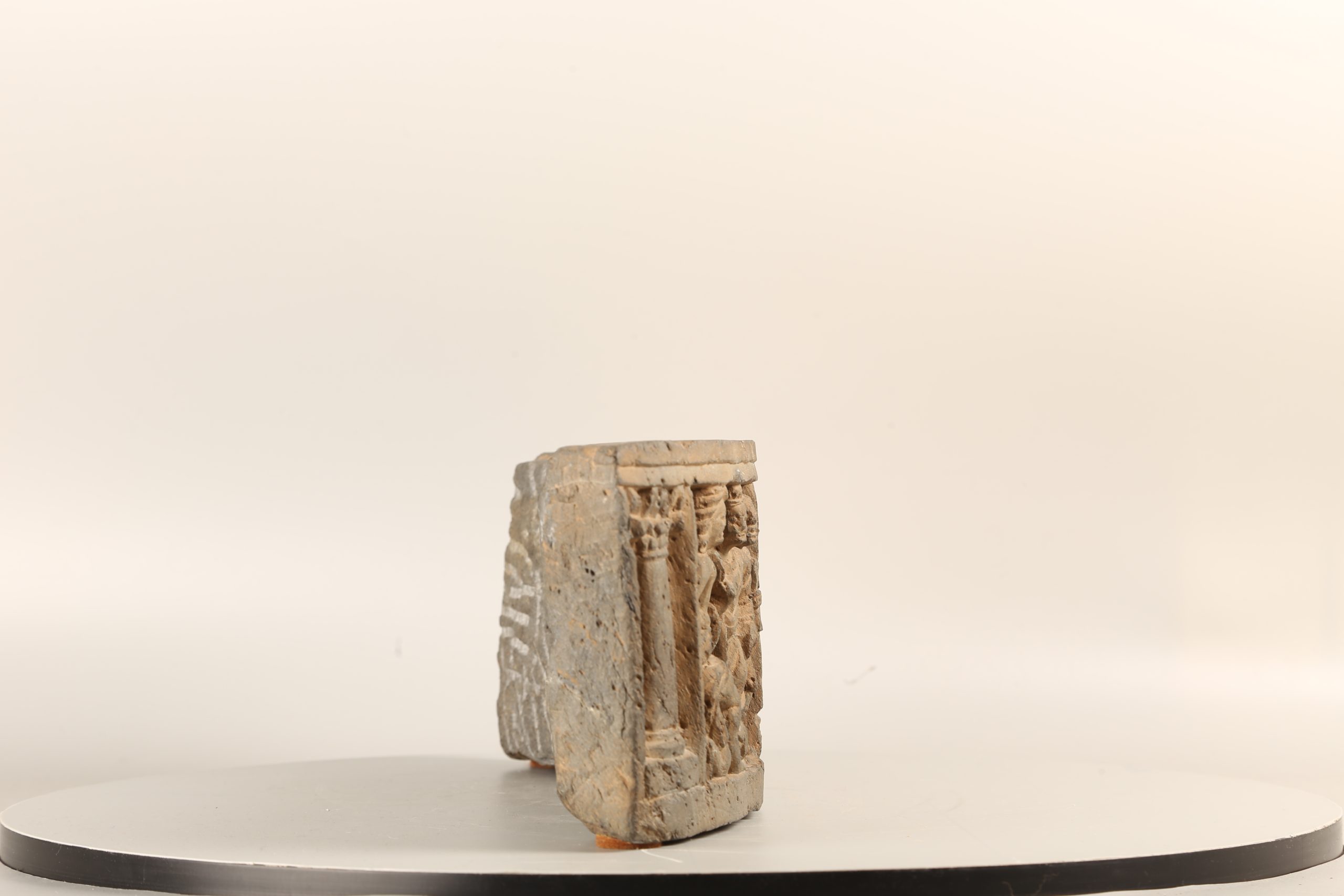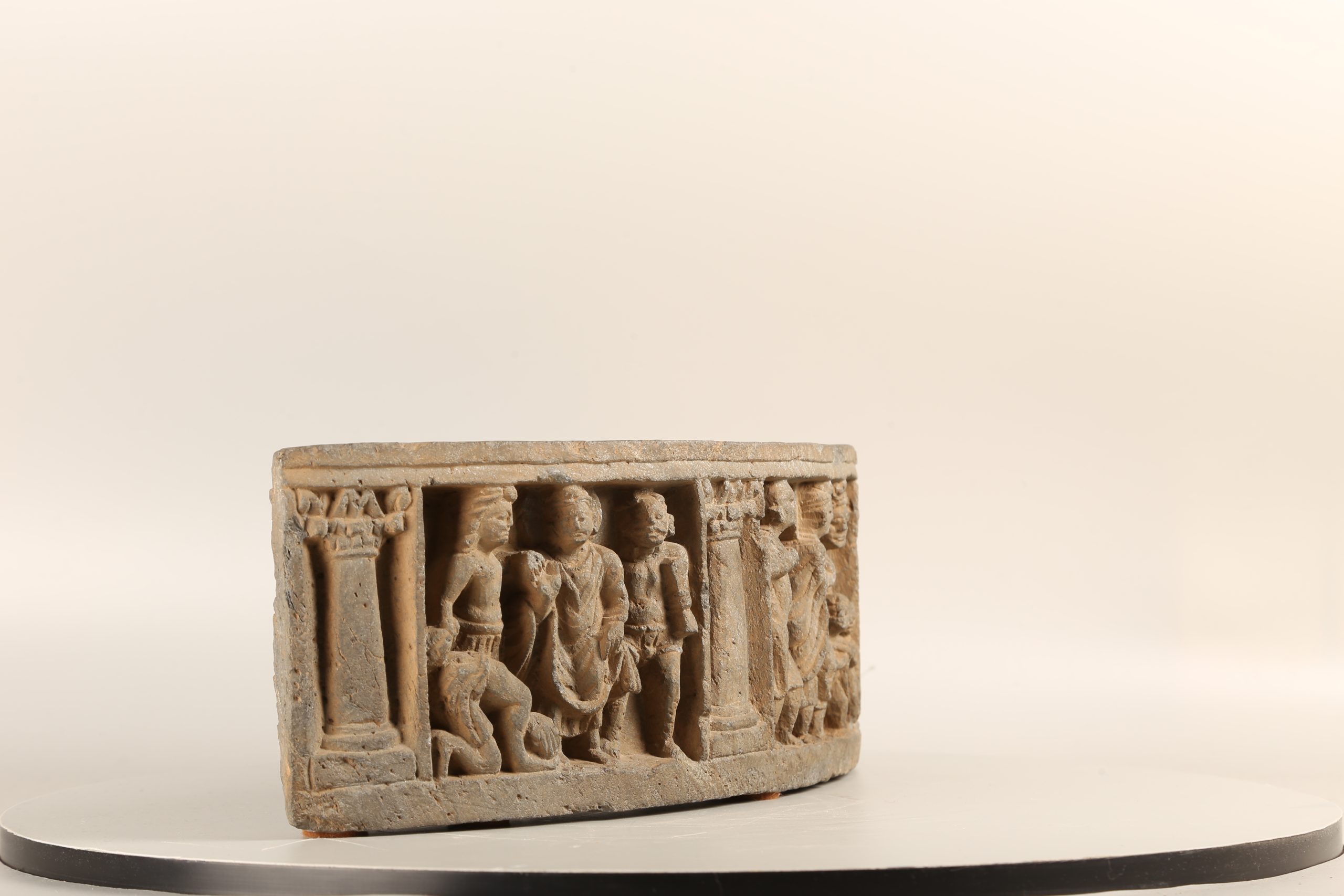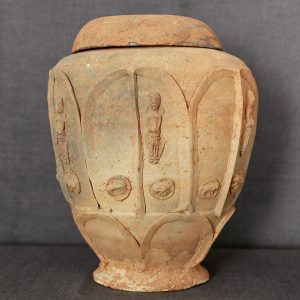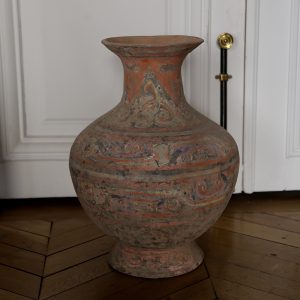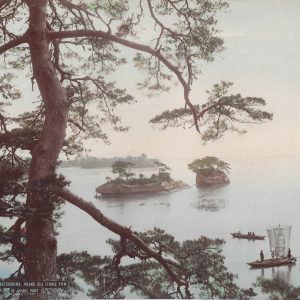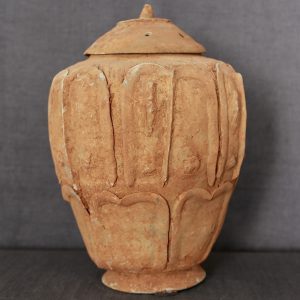Historiated frieze
Schist
Ancient region of Gandhāra
2nd-4th century
H. 13cm
Vue à 360°
Description
This work is an emblematic example of Greco-Buddhist art from Gandhāra. It bears a very rich and lively historiated decoration, diffusing a specific iconography.
Religious and artistic renewal
Carved in schist, in high relief, this frieze depicts a narrative scene that seems to illustrate scenes from the life of Buddha.
Two episodes are depicted in a classical Gandhāra manner, separated by a column and set in an architectural setting.
The scene on the left shows four figures, the one in the centre of which is nimbed, wearing a turban, and dressed in a garment thrown over the shoulder. An orant prostrates himself at his feet. On either side are two standing figures, their bodies turned towards the nimbed figure. One is bare-chested, while the other is dressed in a short tunic. In the scene on the right, the same central figure is present, with his nimbus and turban, and his garment with multiple folds. He holds a rounded element in his hand and is shown in profile. To his right stands a figure probably wearing a monastic garment, whose tonsure reinforces the hypothesis of his religious status. To his left is a figure also wearing a turban, with two children clutching him.
These scenes probably evoke episodes from the life of Prince Siddhārtha, before he experienced enlightenment and became the Buddha. It is possible to assume that it is Siddhārtha’s nocturnal outings that are depicted here, outings that eventually convince him to leave the palace in order to lead a life of asceticism and meditation.
It was in Gandhāra that the anthropomorphic iconography of the Buddha was gradually introduced, thus breaking with centuries of aniconic tradition. This change is to be linked with the development of Mahāyāna Buddhism, which turned to a larger number of followers. A syncretic style then developed, which can be seen in the use of pilasters and columns surmounted by Hellenistic-style capitals with acanthus motifs, a device well known to the Greeks which allows the different moments of a narrative to be divided and divided, as is the case here.
A syncretic art
In Gandhāra, art is protean and the style resolutely syncretic, at the crossroads of influences: the clothing style of the figures bears witness to Hellenistic and Roman stylistic influence, sometimes draped in broad garments with quilted folds reminiscent of the toga or himation, sometimes the muscular bust left exposed and covered with jewels, then reminiscent of the nomadic ancestry of the Kuṣāṇ tribes (Guishuang, the Yuezhi tribe that gave rise to the term Kuṣāṇ). The elaborate hairstyles and heavy earrings, on the other hand, are typically Indian. This stylistic cosmopolitanism is a fortunate feature of Gandhāra art; the dual influence of classical Mediterranean and Indian sculpture gives this work its charm by endowing it with a strong aesthetic and a great historicity.
The art of narration in Gandhāra
Finally, it is interesting to note the curved shape of this frieze: this indicates that it decorated a stūpa. Gandhāra monasteries in fact adjoined two types of spaces: courtyards accessible to devotees cluttered with all sorts of ex-voto monuments, such as burial mounds (stūpa) and chapels, and beyond that an enclosure reserved for monks only. In the public areas, the bases of the stūpa, the door and window surrounds, the plinths and sometimes even the risers of the stairs bore numerous reliefs, juxtaposing decorative motifs and apologetic narrative scenes. This is the case of this frieze, which was read from right to left according to the traditional practice of circumambulation (consisting of turning ritually around the sacred object, holding it in the right hand, in this case the stūpa).
Provenance: French private collection (by repute).

